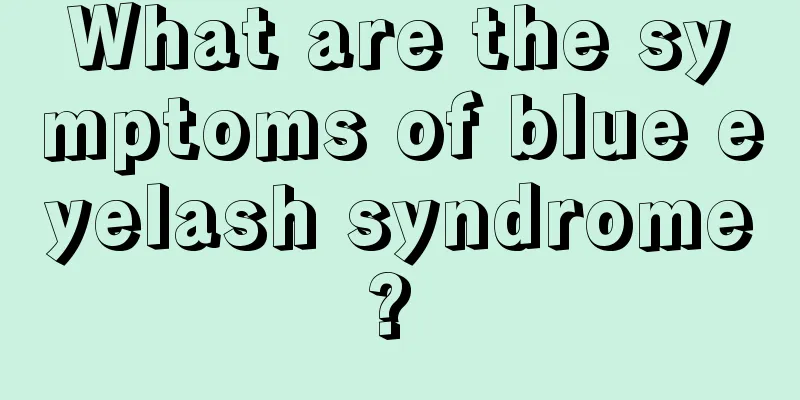What are the symptoms of blue eyelash syndrome?

|
Blue eyelash syndrome is actually a relatively common eye disease in life. Generally, this disease is related to personal fatigue and the onset is relatively sudden. Patients with blue eyelash syndrome will have more obvious symptoms, such as high intraocular pressure that lasts for a long time, mild discomfort, blurred vision, etc., so if friends find that there are problems with their vision, they must check their eye health. Glaucomatous cyclitis syndrome (Glaucomatous Cyclitis Syndrome), also known as glaucomatous cyclitis crisis or Posner-Shlossman syndrome, is a special form of anterior uveitis with glaucoma, mainly seen in young adults aged 20 to 50 years old. It is characterized by non-granulomatous uveitis with significantly increased intraocular pressure. It has an acute onset, mostly in one eye, and can recur. It is related to fatigue, especially mental fatigue and mental stress. The mechanism of occurrence is a prostaglandin-mediated inflammatory response. The clinical manifestations of inflammation are mild, with very mild local congestion and increased intraocular pressure, which usually have little effect on vision. Clinical manifestations 1. The disease occurs in one eye and recurringly in the same eye, and occasionally both eyes are affected. 2. The intraocular pressure increases paroxysmically and recurs repeatedly, with the intervals ranging from several months to 1 to 2 years. The intraocular pressure can be as high as 5.33~8.0kPa (40~60mmHg). Each attack of high intraocular pressure usually lasts 1~14 days and can recover on its own. A few may last for a month, and rarely for two months. 3. There are no subjective symptoms during an attack, only mild discomfort. Even at the peak of the attack, there are no obvious symptoms such as headache and eye pain like acute angle-closure glaucoma. 4. Vision is generally normal, but if there is corneal edema, vision will be blurred. 5. During the attack, the pupil is slightly larger and reacts to light. Although he had recurrent mild cyclitis, posterior synechiae never occurred. 6. Each attack presents as mild cyclitis, which often occurs within 3 days after the onset of high intraocular pressure. There are a few cells floating in the aqueous humor, and the aqueous humor flares are often negative. Corneal posterior wall deposits often appear within 3 days after the onset of the disease. They are grayish white, small or large and flat, and have a mutton-fat-like appearance. There are usually no more than 25 of them, and they are concentrated in the lower 1/3 of the cornea or hidden in the trabecular meshwork of the angle. The symptoms disappear within a few days to a month after the intraocular pressure returns to normal. KP may reappear or disappear when intraocular pressure fluctuates, so a comprehensive and detailed examination should be performed. |
<<: What are the treatments for papules and acne
>>: How do throat stones occur?
Recommend
Is the recurrence rate of prostate cancer high after surgery? What should we pay attention to after prostate cancer surgery?
Prostate cancer is a malignant tumor that is rela...
How to use Luo Han Guo to treat pharyngitis
Many friends are familiar with Luo Han Guo, becau...
This method can treat renal failure
Renal failure is a type of kidney disease caused ...
The hazards of fast temperature changing cups
I don’t know if you have ever used a quick temper...
Does pyrazinamide have the side effect of fever?
Most people do not have other symptoms when takin...
Is fasting blood sugar 68 high?
Everyone knows that diabetes is very harmful to t...
What lipstick is suitable for dry lips
There are many reasons for dry lips. Some people ...
How long can you live with testicular cancer? It is related to many factors
The survival time of testicular cancer is related...
Is the chance of ectopic pregnancy with blastocyst high?
The biggest wish of fathers who are preparing to ...
Symptoms and manifestations of rectal cancer
Rectal cancer may cause symptoms such as diarrhea...
What should I do if my foot joints are swollen?
In daily life, when we walk or climb for a long t...
What are the causes of gastric cancer?
Gastric cancer is one of the most common malignan...
What are the benefits of drinking soda water?
Baking soda can not only beautify the skin, but a...
What happens if you wash your hair with shower gel
Everyone is very familiar with shower gel. We use...
Where is the best skin cancer hospital
Which hospital is the best for skin cancer treatm...









